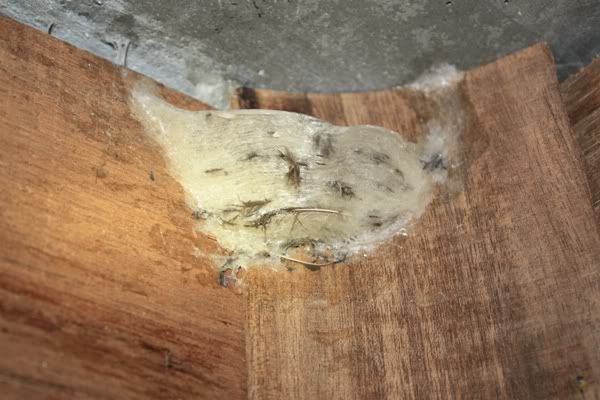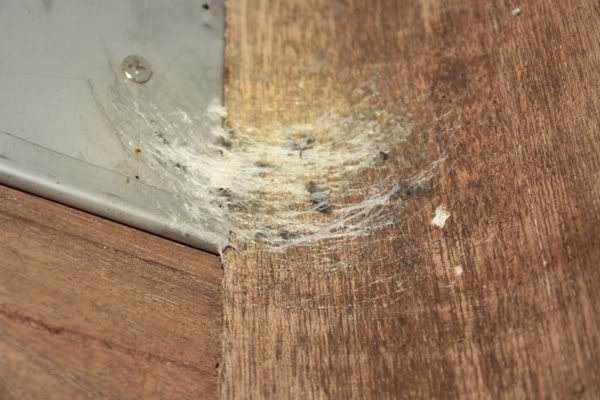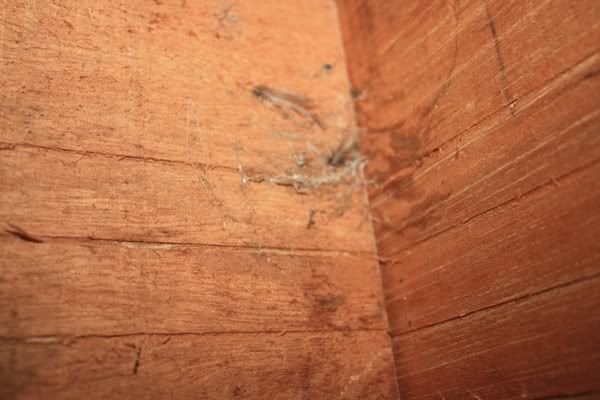เครื่องควบคุมอุปกรณ์ ไฟฟ้า ด้วยค่าอุณหภูมิ หรือ ค่าความชื้น ยี่ห้อ Faran จากประเทศเกาหลี
ท่านที่เคยใช้ หรือกำลังปวดหัวกับคุณภาพของ เครื่องควบคุมคุณภาพต่ำ แต่ราคาสูง จากแหล่งอื่นๆ
ขอแนะนำ เครื่องควบคุม คุณภาพดีเลิศ จาก Faran ประเทศเกาหลี
ชื่อของ Faran เป็นที่ยอมรับกันอยู่แล้ว ว่าคุณภาพเชื่อถือได้
ผู้ที่เคยใช้ เครื่องทำหมอกของ Faran ย่อมรู้ดี

ก คุณสมบัติ เด่น ของเครื่องควบคุมตัวนี้
ก1 หัวเซ็นเซอร์ ที่ทำด้วย หัวทองเหลือง สามารถติดตั้งในบ้านนกได้เลย
ไม่เหมือนหัวเซ็นเซอร์คุณภาพต่ำ ทั่วๆไป ที่มองเห็นวงจร ไอซีอยู่ภายใน เสียหายง่ายมากเมื่อโดนฝุ่นละออง หรือ ความชื้น
จึงต้องหาพลาสติกมาครอบกันขี้นก กันความชื้นเข้า ซึ่งการใช้พลาสติกมาครอบจะทำให้ ค่าที่อ่านเพี้ยนได้
ตัวหัวเซ็นเซอร์ทองเหลืองนี้ ถ้าสกปรกมาก สามารถถอดออกมา ขัดล้าง แล้วใส่กลับไปดังเดิมได้
ก2 ผู้ผลิตแนะนำว่า สามารถต่อสายได้ถึง 30 เมตร โดยไม่ทำให้ค่าเพี้ยน ไม่มีเครื่องควบคุมตัวไหน ที่ผู้ผลิต แนะนำให้ต่อสาย
เกิน 30 เมตร เครื่องคุณภาพต่ำโดยทั่วไป ทางโรงงานจะแนะนำให้ต่อสายได้เพียง 5 เมตร เท่านั้น แต่ผู้แทนจำหน่าย
นำมาแนะนำเกินความเป็นจริง ซึ่งจะมีผลต่อค่าความถูกต้อง และการใช้งานระยะยาว อย่างแน่นอน
ก3 ใช้ควบคุม เครื่องใช้ไฟฟ้า ได้สองชนิด โดยควบคุมด้วยอุณหภูมิ 1 ชนิด (เช่น พัดลม) และควบคุมด้วยค่าความชื้น 1 ชนิด
(เช่น เครื่องทำความชื้น) ใช้ควบคุมเครื่องทำความชื้น/พัดลม ได้พร้อมๆกันถึงครั้งละไม่เกินสามเครื่อง
ก4 ประกอบใส่กล่องมาจากโรงงานFaran ประเทศเกาหลี
การใช้งาน
เสียบปลั๊กตัวเครื่อง เสียบเต้าเครื่องใช้ไฟฟ้าที่จะควบคุมด้วยอุณหภูมิ เช่นพัดลม ไว้ใต้เครื่องด้านซ้าย และเสียบเต้าเครื่องใช้ไฟฟ้าที่จะควบคุมด้วยความชื้น เช่นเครื่องทำความชื้น ไว้ใต้เครื่องด้านขวา
กดปุ่ม On จะแสดงค่า อุณหภูมิ ความชื้น ที่อ่านได้ ทันที

ก่อนใช้งาน ควรทำความเข้าใจโหมดการทำงานของเครื่องก่อน ดังนี้
1. เครื่อง มีโหมดทั้งหมด สี่ โหมด
1.1 โหมด typ Output Mode สำคัญมาก ต้องตั้งให้ถูกต้อง
1.1.1 C (cooling) เป็นการตั้งค่า ให้เครื่องไฟฟ้าที่เสียบปลั๊กไว้ ใต้เครื่องด้านซ้าย เริ่มทำงานที่อุณหภูมิ สูง และหยุดที่
อุณหภูมิต่ำ เพื่อลดอุณหภูมิ
1.1.2 H (Heating) เป็นการตั้งค่า ให้เครื่องไฟฟ้าฯ เริ่มทำงานที่อุณหภูมิ ต่ำ และหยุดที่อุณหภูมิสูง เพื่อเพิ่มอุณหภูมิ
1.1.3 H (humidifier) เป็นการตั้งค่า ให้เครื่องไฟฟ้าที่เสียบปลั๊กไว้ ใต้เครื่องด้านขวา เริ่มทำงานที่ความชื้นต่ำ และ
หยุดที่ความชื้นสูง เพื่อเพิ่มความชื้น
1.1.4 D (dehumidifier) เป็นการตั้งค่า ให้เครื่องไฟฟ้าฯ เริ่มทำงานที่ความชื้นสูง และหยุดที่ความชื้นต่ำ เพื่อลดด
ความชื้น
1.2 โหมด dLE Output Delay
เป็นการตั้งค่า ดีเลย์ ว่า เมื่อถึงค่าอุณหภูมิและความชื้นที่เราตั้งไว้แล้ว ให้รออีกกี่วินาที ถึงจะให้เครื่องไฟฟ้าฯ เริ่ม/หยุด ทำงาน
ตั้งได้ตั้งแต่ 0-999 วินาที เช่นเราตั้งค่าให้พัดลม เริ่มทำงานไว้ที่ 32 องศา เราตั้ง 20 วินาที เมื่อถึงอุณหภูมิ ที่ 32
องศาแล้ว เครื่องจะรออีก 20 วินาที จึงจะเริ่มทำงาน หรือ เราตั้งค่าให้เครื่องทำความชื้น หยุดทำงานไว้ที่ 85%RH เรา
ตั้ง 25 วินาที เมื่อถึงความชื้นที่ 85%RH เครื่องจะรออีก 25 วินาที จึงจะหยุดทำงาน เป็นต้น
1.3 โหมด dIF Output Accuracy
ใช้ตั้งค่า ที่จะเริ่ม/หยุด เครื่องไฟฟ้าฯ เช่นเราตั้งค่าเริ่มทำงานไว้ที่ 32 องศา ต้องการหยุดที่ 28 องศา ก็ตั้งไว้ที่ 4 องศา
เป็นต้น หรือ เราตั้งค่าให้เครื่องทำความชื้นให้หยุดทำงานไว้ที่ 85%RH เราต้องการให้เริ่มทำงานใหม่ที่ 80%RH
เราก็ตั้งค่าไว้ที่ 5%RH เป็นต้น ทั้งนี้ ต้องอย่าลืม ตั้งค่าโหมด EYP ให้ถูกต้องก่อนด้วย
1.1 โหมด Cor Correction Current Temp/Humidifier
ใช้ในการปรับความถูกต้องของค่า อุณหภูมิ และความชื้น เมื่อทำการ Calibrate ( สอบเทียบ ) เครื่อง
เมื่อใช้งานเครื่องไปสักระยะหนึ่ง ควรทำการ สอบเทียบ เครื่อง โดยการหาเครื่องที่มีความถูกต้องแม่นยำที่ไม่ได้ใช้งานใน
สภาพเดียวกันนี้มาเปรียบเทียบดู ถ้าพบว่าค่าที่อ่านได้ ไม่ตรงกัน และท่านแน่ใจว่า เครื่องที่นำมา สอบเทียบ แม่นยำกว่า
ก็สามารถ ปรับ ค่าของเครื่องนี้ ให้ตรงกันกับค่าที่แม่นยำกว่าได้
2. วิธีการตั้งค่าโหมด ของอุณหภูมิ
2.1 ให้กดที่ปุ่ม Temperature Setting ค้างไว้ นาน 3 วินาที หน้าจอก็จะขึ้นโหมดแรก EYP
2.2 กดปุ่มเดิมซ้ำ (ไม่ต้องกดค้าง) หน้าจอก็จะเปลี่ยนเป็น อักษร C ถ้าต้องการโหมด H (ดูข้อ 1.1.1) ก็กดที่ปุ่มลูกศรขึ้น ลง กลับไป มาได้
2.3 ตั้งเสร็จแล้ว กดปุ่มเดิม หน้าจอจะเลื่อนไปที่โหมดต่อไป ที่dLE หน้าจอจะแสดง 0 ให้กดลูกศร เปลี่ยนเป็นตัวเลขวินาที
ที่ต้องการได้ เช่นเราตั้งค่าให้พัดลม เริ่มทำงานไว้ที่ 32 องศา เราตั้ง 20 วินาที เมื่อถึงอุณหภูมิ ที่ 32
องศาแล้ว เครื่องจะรออีก 20 วินาที จึงจะเริ่มทำงาน
2.4 ตั้งเสร็จแล้ว กดปุ่มเดิม หน้าจอจะเลื่อนไปที่โหมดต่อไป ที่ dIF หน้าจอจะแสดง 1.0 C ให้ตั้งตัวเลขที่ต่างจากตัวตั้งต้น
เช่น 4 องศา เครื่องไฟฟ้าจะหยุดเมื่ออุณหภูมิ ต่างจากค่าตั้งต้น 4 องศา (ดูข้อ 1.3)
2.5 กดปุ่มเดิม หน้าจอจะเลื่อนไปที่โหมดต่อไป ที่ Cor หน้าจอจะแสดง 0 ไม่ต้องทำอะไร จะใช้เมื่อเราต้องการ ปรับเปลี่ยน
ค่าที่อ่านได้ เมื่อได้ทำการสอบเทียบเท่านั้น (ดูข้อ 1.4)
2.6 เสร็จแล้ว กดปุ่มเดิม ค้าง 3 วินาที เพื่อให้หน้าจอกลับไปแสดงค่า อุณหภูมิที่อ่านได้ ในขณะนั้น
3. วิธีการตั้งค่าโหมด ของความชื้น
3.1 ให้กดที่ปุ่ม Humidity Setting ค้างไว้ นาน 3 วินาที หน้าจอก็จะขึ้นโหมดแรก EYP
3.2 กดปุ่มเดิมซ้ำ (ไม่ต้องกดค้าง) หน้าจอก็จะเปลี่ยนเป็น อักษร H (ใช้กะเครื่องพ่นหมอก) ถ้าต้องการโหมด D (ใช้กะเครื่องดูด
ความชื้น) ก็กดที่ปุ่มลูกศร กลับไปมาได้ (ดูข้อ 1.1.3)
3.3 ตั้งเสร็จแล้ว กดปุ่มเดิม หน้าจอจะเลื่อนไปที่โหมดต่อไป ที่dLE หน้าจอจะแสดง 0 ให้กดลูกศร เปลี่ยนเป็นตัวเลขวินาทีที่
ต้องการได้ เช่นเราตั้งค่าให้เครื่องทำความชื้นหยุดทำงานที่ 85%RH เราตั้งค่านี้ที่ 25 วินาที เมื่อความชื้นถึง
85%RH แล้ว เครื่องจะรออีก 25 วินาที ถึงจะหยุดทำงาน
3.4 ตั้งเสร็จแล้ว กดปุ่มเดิม หน้าจอจะเลื่อนไปที่โหมดต่อไป ที่ dIF หน้าจอจะแสดง 1% ให้ตั้งตัวเลขที่ต่างจากตัวตั้งต้น เช่น
5%RH เครื่องทำความชื้น จะเริ่มทำงานใหม่ที่ความชื้น ต่างจากค่าตั้งต้น 5%RH คือ 80%RH เป็นต้น
3.5 กดปุ่มเดิม หน้าจอจะเลื่อนไปที่โหมดต่อไป ที่ Cor หน้าจอจะแสดง 0 ไม่ต้องทำอะไร จะใช้เมื่อเราต้องการ ปรับเปลี่ยน
ค่าที่อ่านได้ เมื่อได้ทำการสอบเทียบเท่านั้น
3.6 เสร็จแล้ว กดปุ่มเดิม ค้าง 3 วินาที เพื่อให้หน้าจอกลับไปแสดงค่าความชื้น ที่อ่านได้ ในขณะนั้น
4. การตั้งค่า ให้เครื่องควบคุมเริ่มทำงานด้วย ค่าอุณหภูมิ
เช่นเสียบปลั๊กพัดลมไว้ ที่ด้านใต้ซ้ายมือของเครื่อง เพื่อดูดลมออก ที่ 32 องศา C
4.1 กด Temperature Setting ค่าอุณหภูมิ จะกระพริบ
4.2 ให้ปรับค่าที่ไปที่ 32 โดยกดปุ่ม ลูกศร ขึ้น หรือลูกศร ลง
4.3 กด Set อีกที่ เครื่องจะจำค่าที่ตั้งไว้
4.4 แล้วเครื่องจะกลับไปอ่านค่าปัจจุบัน
เมื่อไร ที่เครื่องอ่านค่าอุณหภูมิ ถึง 32 องศา ตัวพัดลมจะเริ่มทำงาน เริ่มหลังจากที่ถึง 32 องศา กี่วินาที ขึ้นกะค่าที่เราตั้งไว่ในข้อ 2.3
เมื่อพัดลมทำงานแล้ว เราต้องการให้พัดลมหยุดที่อุณหภูมิ 28 องศา เราก็ต้องตั้งค่าข้อ 2.4 ที่ 4 องศา (32 – 28 = 4 )
สรุป การตั้งค่า ให้เครื่องควบคุมหยุดทำงานด้วย ค่าอุณหภูมิ
ต้องไปตั้งที่โหมด dIF ว่าจะให้หยุดที่ อุณหภูมิ ที่ต่างจากค่าเริ่มต้นเท่าไร
5. การตั้งค่า ให้เครื่องควบคุมหยุดทำงานด้วย ค่าความชื้น
เช่นเสียบปลั๊กเครื่องทำความชื้นไว้ ที่ด้านใต้ขวามือของเครื่อง เพื่อให้ทำความชื้นให้ได้ ถึง 85%RH
5.1 กด Humidity Setting ค่าความชื้น จะกระพริบ
5.2 ให้ปรับค่าไปที่ 85%RH โดยกดปุ่ม ลูกศร ขึ้น หรือลูกศร ลงตามต้องการ
5.3 กด Set อีกที่ เครื่องจะจำค่าที่ตั้งไว้
5.4 แล้วเครื่องจะกลับไปอ่านค่าปัจจุบัน
เมื่อไร ที่เครื่องอ่านค่าความชื้น ต่ำกว่า 85%RH ตัวเครื่องทำความชื้นจะเริ่มทำงาน หลังจากที่ถึง 85%RH เครื่องจะหยุดทำงาน แต่จะหยุดหลังจากนั้นกี่วินาที ขึ้นกะค่าที่เราตั้งไว่ในข้อ 3.3
เมื่อเครื่องทำความชื้นหยุดทำงานแล้วที่ 85%RH เราต้องการให้เครื่องทำความชื้นเริ่มทำงานใหม่ที่ ความชื้นเท่าไร เช่น ที่ 80%RH เราก็ต้องตั้งค่าข้อ 3.4 ที่ 5 องศา (85 – 80 = 5 )
สรุป การตั้งค่า ให้เครื่องควบคุมเริ่มทำงานด้วย ค่าความชื้น
ต้องไปตั้งที่โหมด dIF ว่าจะให้เริ่มที่ ความชื้น ที่ต่างจากค่าเริ่มต้นเท่าไร
























































